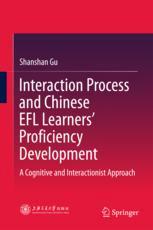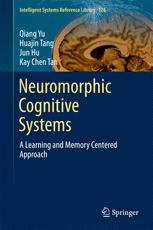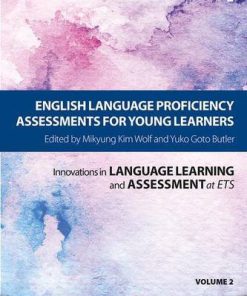Interaction Process and Chinese EFL Learner Proficiency Development A Cognitive and Interactionist Approach 1st Edition by Shanshan Gu ISBN 9811068356 9789811068355
$50.00 Original price was: $50.00.$25.00Current price is: $25.00.
Interaction Process and Chinese EFL Learners’ Proficiency Development A Cognitive and Interactionist Approach 1st Edition by Shanshan Gu – Ebook PDF Instant Download/Delivery: 9811068356, 9789811068355
Full download Interaction Process and Chinese EFL Learners’ Proficiency Development A Cognitive and Interactionist Approach 1st Edition after payment

Product details:
ISBN 10: 9811068356
ISBN 13: 9789811068355
Author: Shanshan Gu
This book provides readers a better understanding of the interaction-learning relationship in the English as a Foreign Language (EFL) context. It introduces theories on input, output, and learners’ internal mechanisms, and presents the pedagogical implications of how to adapt focus-on-form instruction in Chinese EFL classrooms. As such, it will be of particular interest to those readers who want to explore the relationship between interaction and language acquisition.
Interaction Process and Chinese EFL Learners’ Proficiency Development A Cognitive and Interactionist Approach 1st Table of contents:
1 Introduction
1.1 Background
1.2 Rationale
1.3 Aims of the Book
1.4 Outline of the Book
2 A Cognitive and Interactionist Approach to SLA
2.1 Rationale
2.2 Input and SLA
2.2.1 Evidence Types in Input
2.2.1.1 Definition of Evidence Types
2.2.1.2 Contribution of Evidence Types to SLA
2.2.2 Role of Input in SLA
2.2.2.1 Input Hypothesis
2.2.2.2 Input Processing
2.3 Interaction and SLA
2.3.1 Position of the Book on Interaction
2.3.2 Function of Interaction in SLA
2.3.3 NF and SLA
2.3.3.1 Definition of NF
2.3.3.2 Categorization of NF
2.3.3.3 Role of NF in SLA
2.4 Output and SLA
2.4.1 Output Hypothesis
2.4.2 Functions of Output
2.4.3 Psycholinguistic Basis of the Output Hypothesis
2.5 Learners’ Internal Mechanisms and SLA
2.5.1 Attention and SLA
2.5.1.1 Concept of Attention and Related Notions
2.5.1.2 Role of Attention/Noticing in SLA
2.5.2 Perception and SLA
2.5.2.1 Operationalization of Perception
2.5.2.2 Role of Perception in SLA
2.6 Summary
3 Pespectives on Interaction Process in SLA
3.1 Perspectives on NF in SLA
3.1.1 The Effects of Recasts in SLA
3.1.1.1 Whether Recasts Promote L2 Development
3.1.1.2 How Recasts Promote L2 Development
3.1.2 Recasts and Negotiation Moves in SLA
3.2 Perspectives on MO in SLA
3.2.1 MO in Response to NF
3.2.2 MO and L2 Development
3.3 Perspectives on Learners’ Internal Mechanisms in SLA
3.3.1 Noticing in SLA
3.3.1.1 Noticing and L2 Development
3.3.1.2 Factors to Affect the Noticing of Recasts
3.3.2 Learners’ Perception in SLA
3.4 Perspectives on English Question Forms in Interaction-Based Research
3.5 Summary
4 Issues in Research Methodology
4.1 Objectives
4.2 Operationalization of EFL Development
4.3 Research Design
4.3.1 The Pretest
4.3.2 The Treatment
4.3.2.1 The First Treatment Condition
4.3.2.2 The Second Treatment Condition
4.3.2.3 The Third Treatment Condition
4.3.2.4 The Fourth Treatment Condition
4.3.3 The Posttests
4.4 Participants
4.4.1 The EFL Learners
4.4.2 The Instructors as Competent Interlocutors
4.5 Instruments
4.5.1 Tasks Employed
4.5.1.1 The Testing Tasks
4.5.1.2 The Treatment Tasks
4.5.2 Measurement of Perception
4.5.3 Measurement of Noticing
4.5.4 Questionnaires Employed in the Study
4.6 Procedures
4.7 Treatment of the Data
4.7.1 Data Transcription
4.7.2 Data Categorization
4.7.2.1 Tests Data Categorization
4.7.2.2 Stimulated Recall Data Categorization
4.7.3 Data Scoring
4.7.4 Data Processing
5 Effects of Interaction Process on EFL Development
5.1 Effects of Negative Feedback, Modified Output, Attention on EFL Development
5.1.1 Data Input in SPSS
5.1.2 Treatment Task Data Analysis
5.1.2.1 Data Description
5.1.2.2 Kruskal-Wallis Test and Mann-Whitney Test
5.1.3 Test Data Analysis
5.1.3.1 Data Description
5.1.3.2 Logistic Regression Analysis Based on QD
Univariate Statistical Analysis Based on QD
Logistic Regression Analysis Based on QD
5.1.3.3 Logistic Regression Analysis Based on QD1
Univariate Statistical Analysis Based on QD1
Logistic Regression Analysis Based on QD1
5.1.3.4 Logistic Regression Analysis Based on QD2
Univariate Statistical Analysis Based on QD2
Logistic Regression Analysis Based on QD2
5.1.4 Summary
5.2 Effects of Learners’ Perceptions on EFL Development
5.2.1 Data Input in SPSS
5.2.2 The EFL Learners’ Perception About NF
5.2.2.1 The EFL Learners’ Perception Analysis Within Group
The Second Group of EFL Learners’ Perception About Recasts
The Third Group of EFL Learners’ Perception About CRs
The Fourth Group of EFL Learners’ Perception About Recasts + CRs
5.2.2.2 The EFL Learners’ Perception Analysis Between Groups
5.2.3 The EFL Learners’ Perception About NF and Question Development
5.2.4 Summary
5.3 Interaction Process and Foreign Language Development
5.3.1 MO and EFL Development
5.3.2 Attention and EFL Development
5.3.3 NF and EFL Development
5.3.3.1 Effects of Recasts on EFL Development
5.3.3.2 Effects of CRs on EFL Development
5.3.4 Perceptions About NF and EFL Development
5.3.4.1 Characteristics of Perceptions About NF
5.3.4.2 Effects of Perceptions About NF on EFL Development
5.3.5 Interactional Processes and EFL Development
6 Conclusion and Implications
6.1 Summary
6.2 Implications
6.2.1 Theoretical Implications
6.2.2 Pedagogical Implications
6.2.3 Methodological Implications
6.3 Limitations and Suggestions for Future Research
People also search for Interaction Process and Chinese EFL Learners’ Proficiency Development A Cognitive and Interactionist Approach 1st:
interaction process and chinese efl learners
integrated chinese dialogue videos
interaction process analysis
why is interaction important for language learning
an interactionist view of language emphasizes that
Tags:
Shanshan Gu,Interaction Process,Chinese EFL Learner,Proficiency Development,Cognitive,Interactionist Approach
You may also like…
Politics & Philosophy - Government & Politics
Education Studies & Teaching - School Education & Teaching
Education Studies & Teaching - Teaching - Reading & Language
Building Proficiency for World Language Learners; 100+ High‑Interest Activities Janina Klimas
Politics & Philosophy - Anthropology
Gu Wu for Secondary Chinese Mandarin: Student Book (IB Diploma Program) Kwun Shun Shih
Reference - Writing
Education Studies & Teaching - Educational Theory
Research Design and Methods: A Process Approach 11th Edition by Bordens 1264169639 9781264169634
dictionaries & phrasebooks












